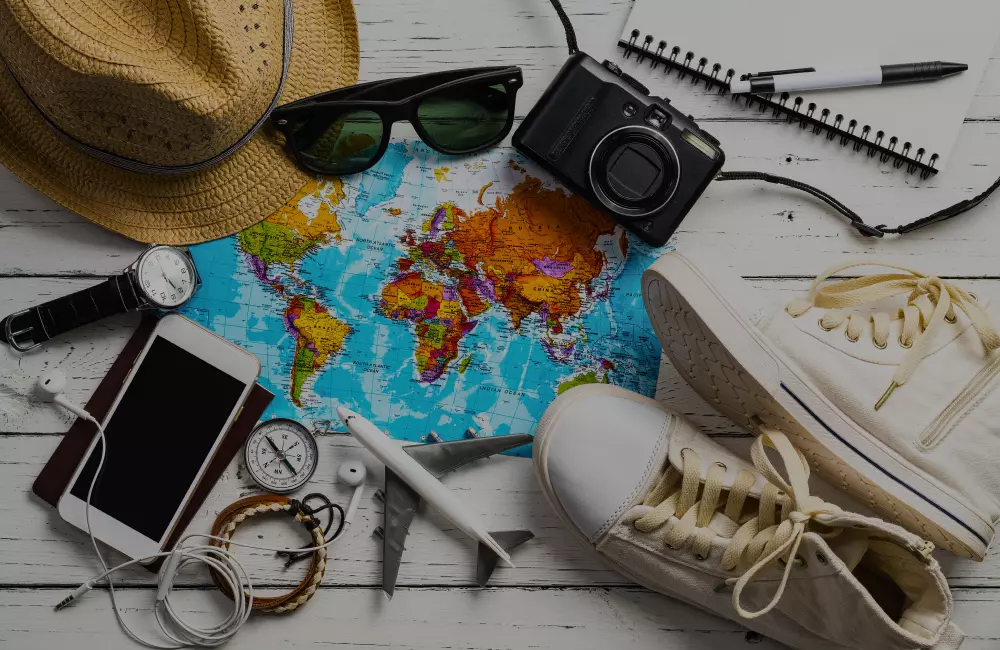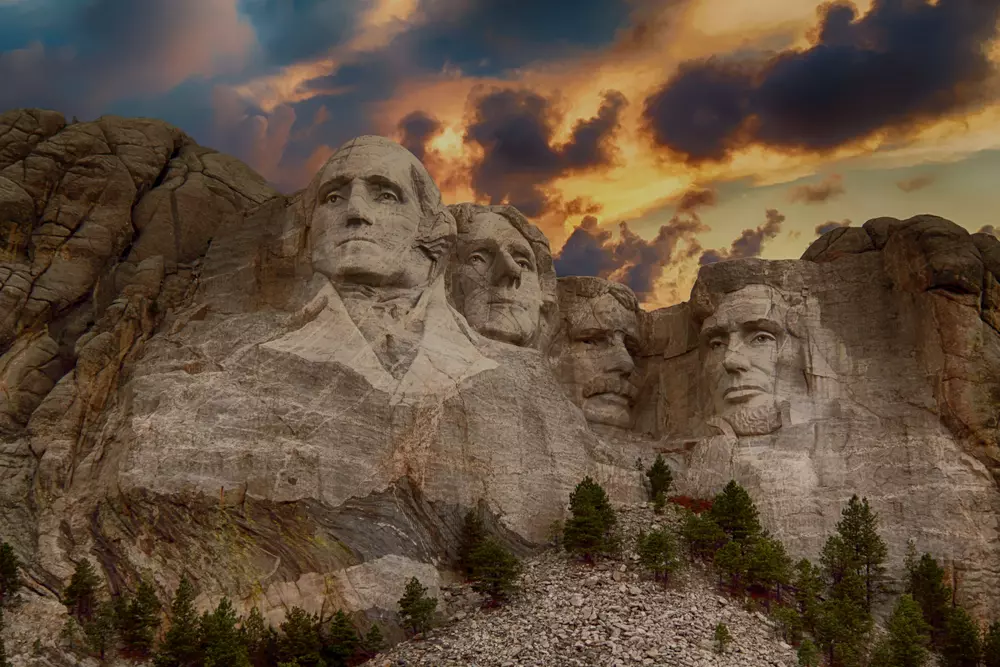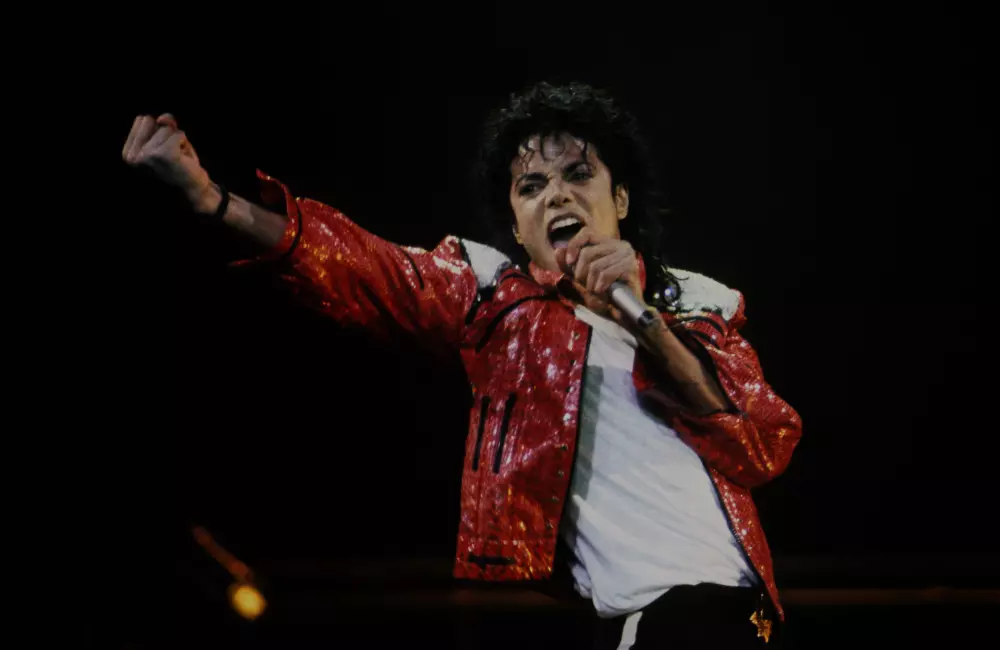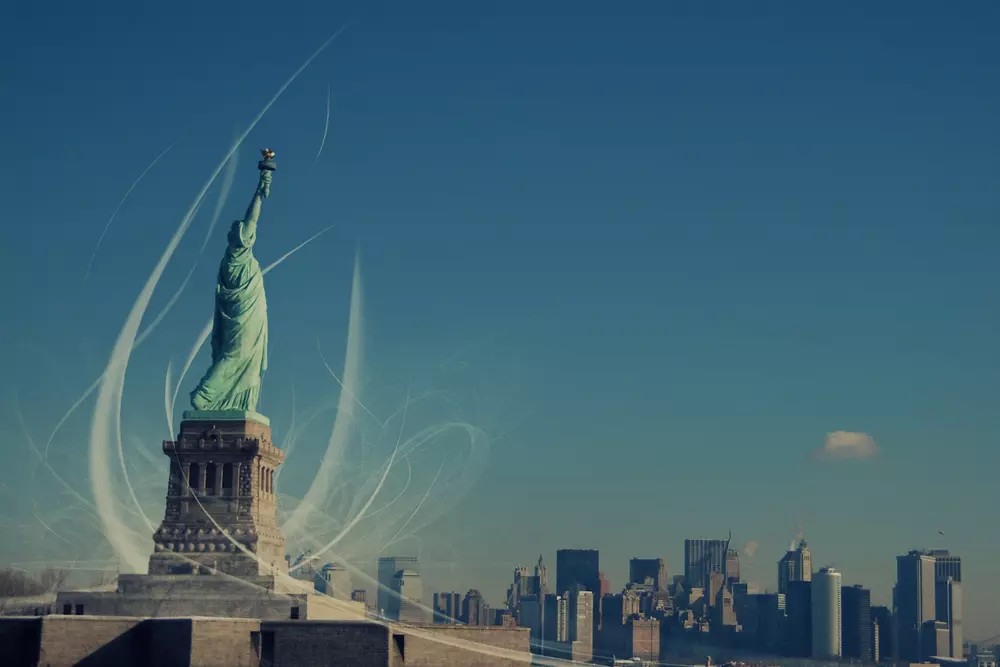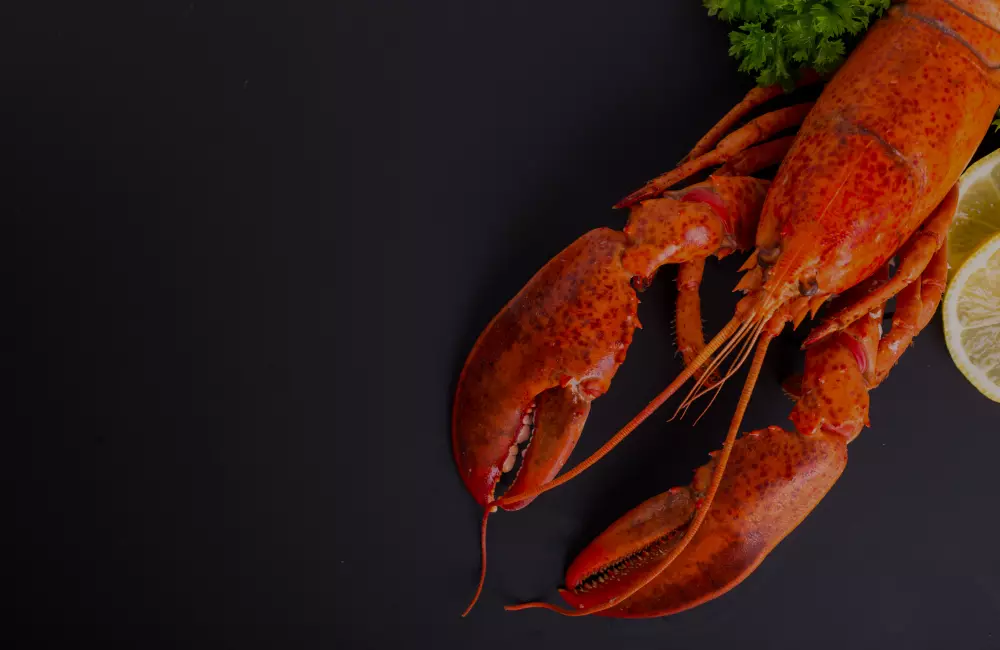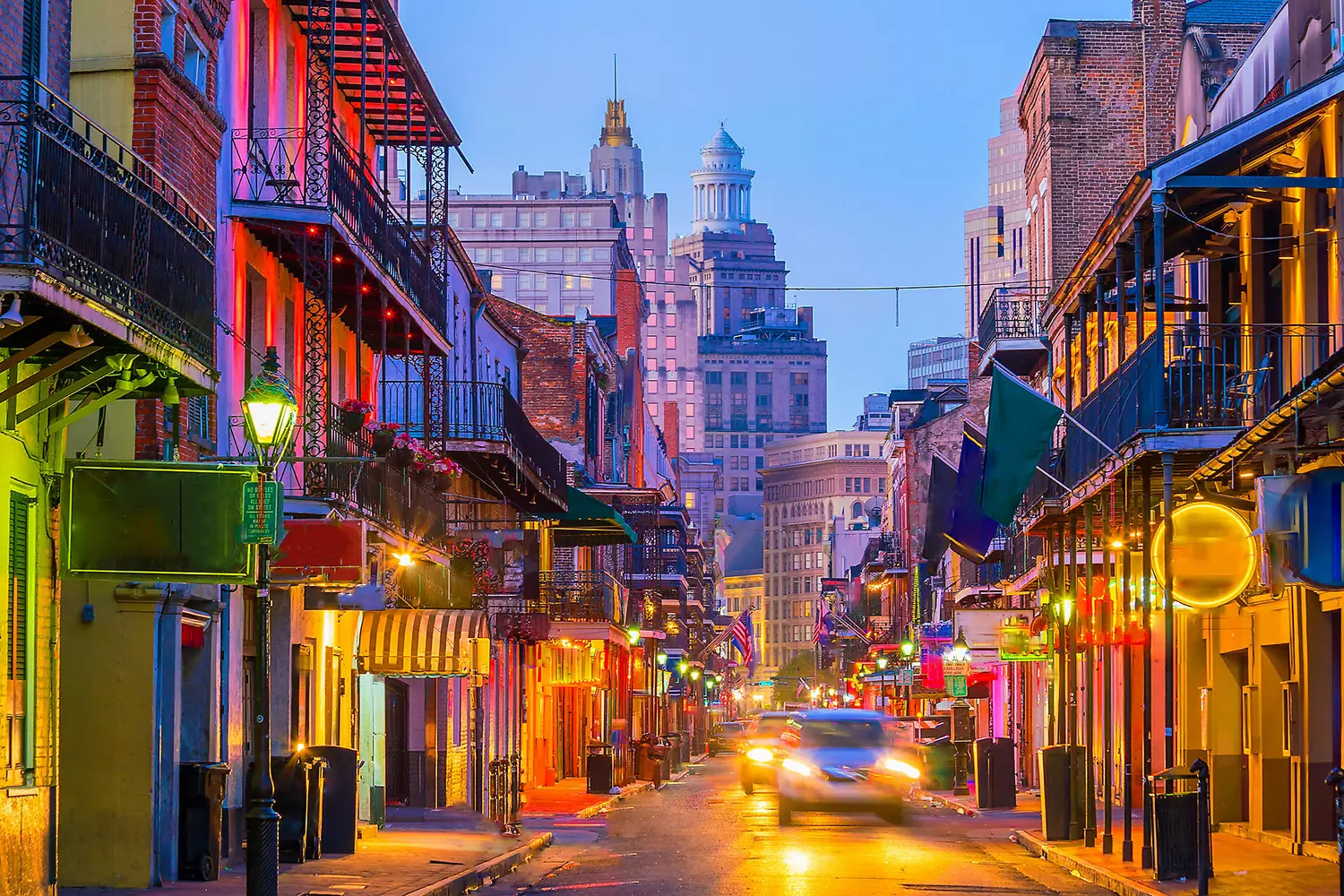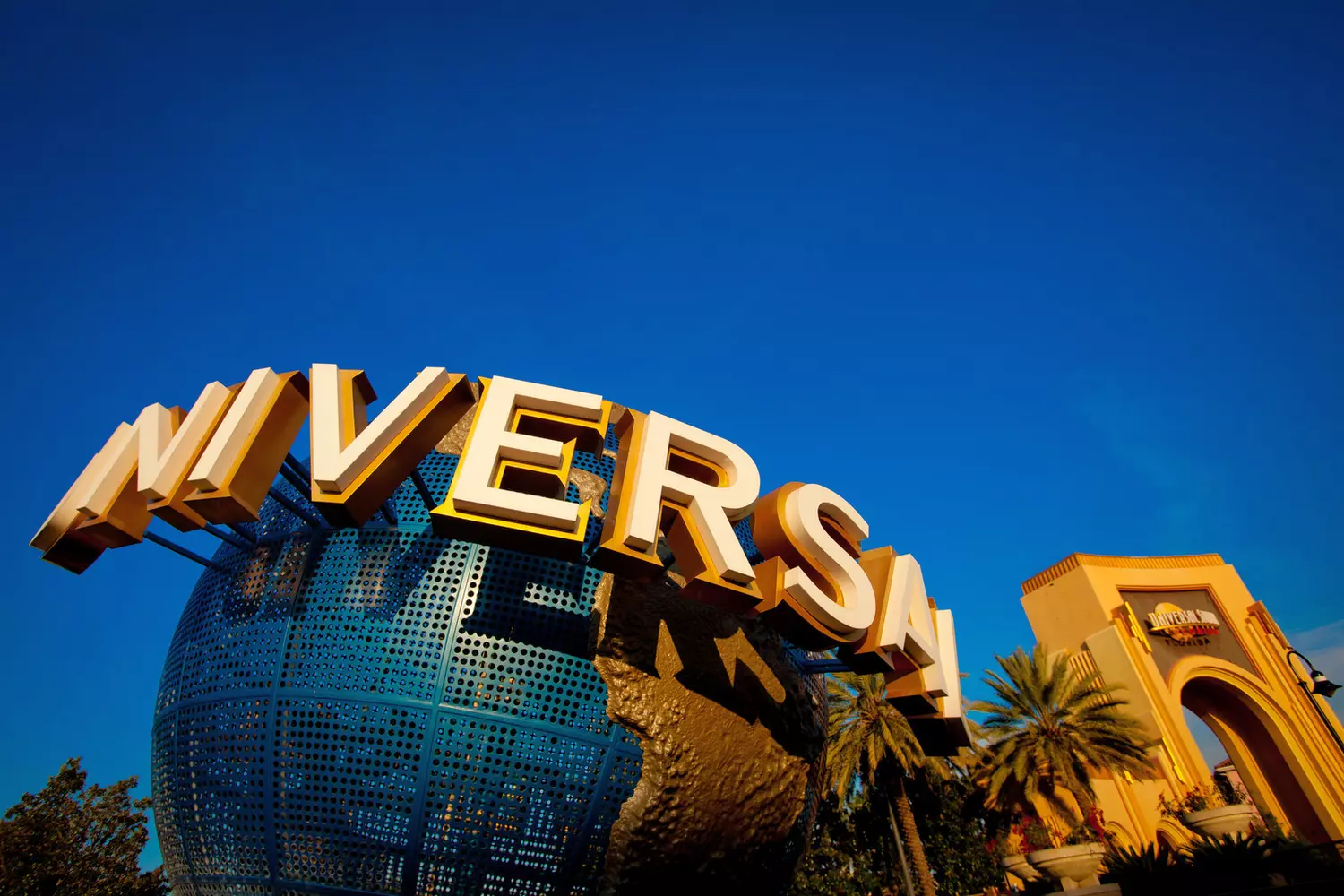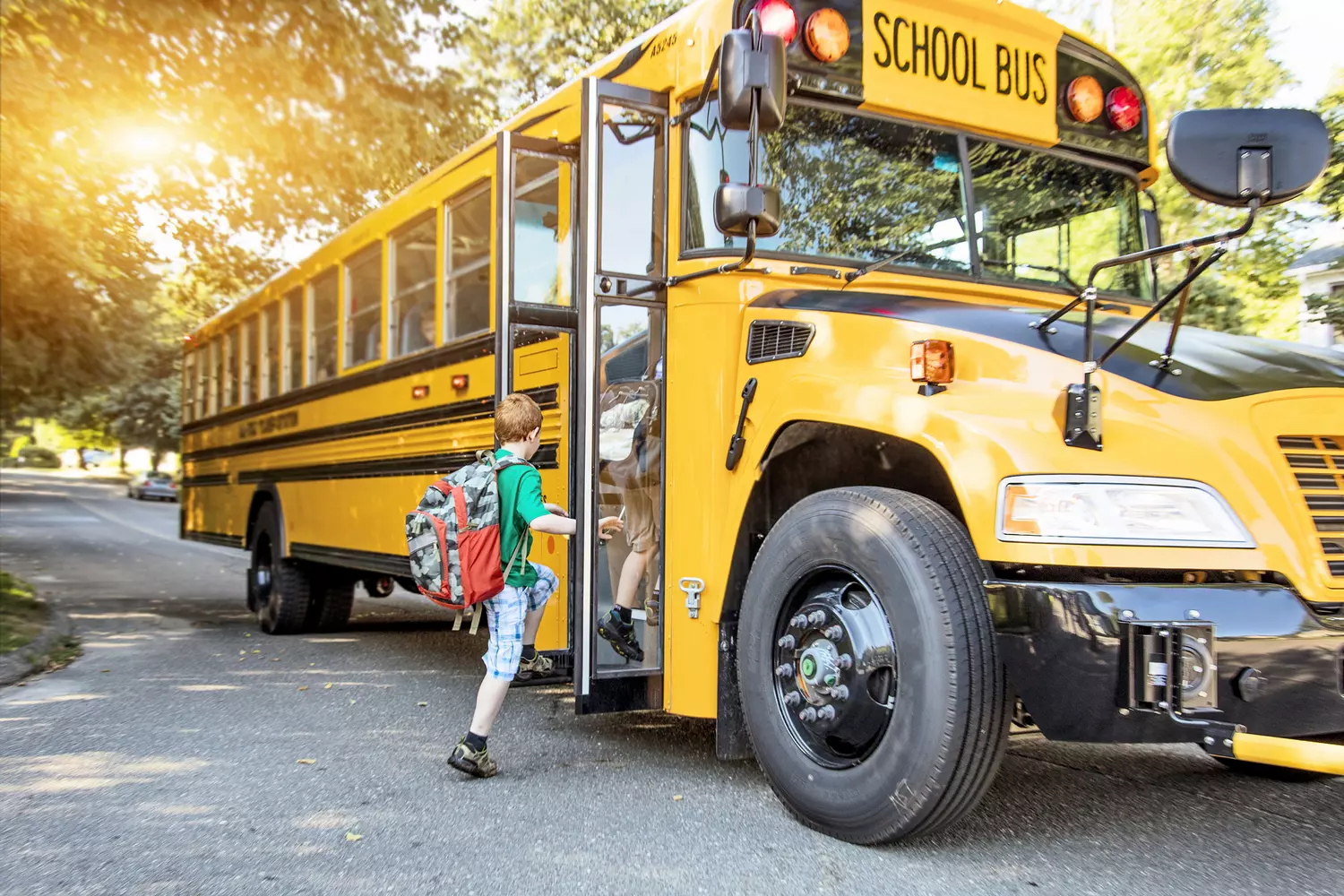America is a land of contrasts. Freedom, Hollywood, skyscrapers, and endless opportunities. Here, anyone can become whoever they want — at least, that’s what the American Dream promises. But this dream has a darker side — harsh, grim, and streetwise. At night, some city neighborhoods turn into zones ruled not by state laws, but by the rules of the streets. Where power belongs not to the police, but to the gangs. Groups that emerged in the poor neighborhoods of American cities reflect social inequality, the struggle for survival, and the search for identity. These are not just criminal organizations — they represent a distinct culture, a subculture with its own rules, gestures, traditions, and even philosophy. Street gangs in the USA are a phenomenon that both frightens and irresistibly attracts researchers, journalists, filmmakers, and teenagers dreaming of the "power of the streets." Where did organizations like Crips, Bloods, MS-13, and Latin Kings come from? What’s the story behind every color, gesture, and tattoo? And how have gangs transformed from local street crews into international networks? All this and more — in our article.

In many American prisons, gangs continue to influence the lives of inmates. Often, they control not only drug trafficking within the facilities but also key decisions: who to associate with, what to eat, and even when to shower.
How Street Gangs Originated in the USA
The origins of street gangs in the USA date back to the mid-19th century. During the wave of mass immigration, millions of settlers from Europe flooded American cities. This was especially true for New York, Chicago, and Philadelphia. Poor neighborhoods were filled with Irish, Italians, Germans, Jews, and other ethnic groups forced to fight for survival amid extreme poverty, discrimination, and lack of social security.
In these harsh conditions, a new subculture began to form — gangs. Initially, they served more as protective groups: young men banded together to defend themselves against police brutality or hostile neighbors from other ethnic communities. However, over time, these groups became involved in criminal activities: extortion, robbery, illegal alcohol and arms trade became common ways to make a living.
In the first half of the 20th century, the situation began to change. Urban populations grew, and racial and class divisions intensified. After the Great Depression in the 1930s, youth crime sharply increased. Military veterans returning from the fronts of the Second World War sometimes used their combat experience not for peaceful purposes but to build criminal organizations.
Starting from the 1950s–60s, African American and Latino gangs became more active. It was no longer just about protecting neighborhoods but gaining full control over them. Teenagers growing up in disadvantaged conditions, deprived of quality education and jobs, saw gangs not merely as a survival tool but as a way to gain power, respect, and a "family."
Here are the main reasons why gangs continue to emerge:
- Poverty and hopelessness
Life in neighborhoods with high unemployment pushes young people toward crime. - Racial and social segregation
Many gangs form along ethnic lines, reflecting the marginalization of certain groups. - Lack of prospects
When access to education and careers is limited, crime appears as an attractive alternative. - Domestic violence and trauma
Children raised in aggressive or unstable environments seek support in gangs. - Desire to belong
A gang becomes a place where one is respected, supported, and recognized — things often missing in family or society.
Thus, street gangs in the USA are not just about crime. They are the result of much deeper processes: inequality, neglect, and a thirst for identity. Understanding these reasons is the first step toward finding solutions.
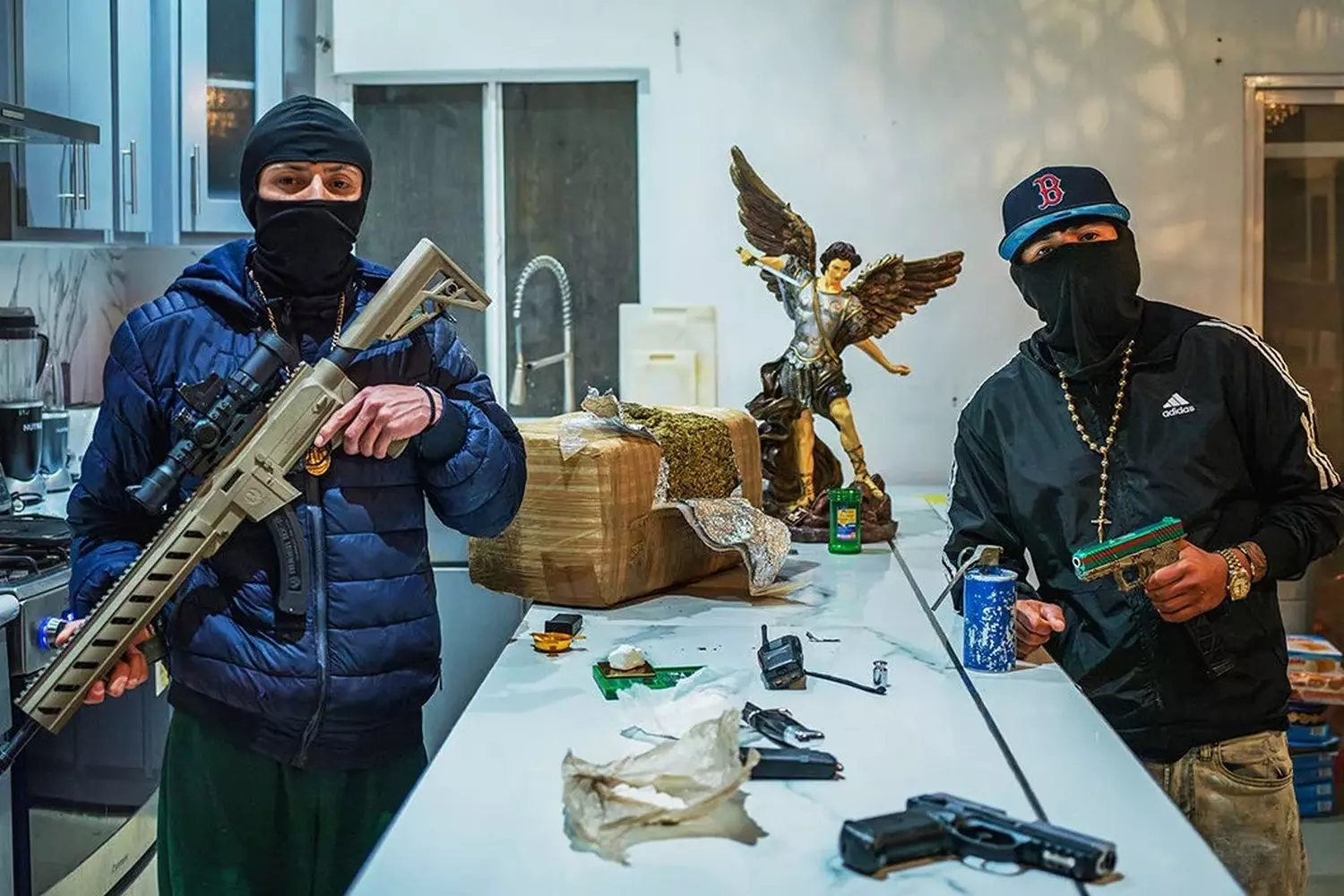
What Makes a Gang a Gang: Structure and Rules
At first glance, street gangs may seem chaotic, but in reality, they are well-organized and disciplined structures. Most major groups are arranged like paramilitary organizations with their own charter, a system of punishments, and a promotion ladder.
- 01. Gang Hierarchy
- OG (Original Gangsters)
The founders, authorities, and veteran leaders. They are the elders whose word is law. They make key decisions, control finances, and set strategy. - Shot Callers
The "deal-makers" who manage specific operations and territories. These are the people who coordinate actions on the ground, recruit new members, and issue orders. - Soldiers
The "soldiers," or regular fighting members of the gang. They participate in street fights, run drug trades, and collect "taxes" from outsiders. - Young Bloods / Pee Wees
Newcomers, often teenagers. They are assigned the dirty work — from car thefts to carrying out a "loyalty test," which can include violence or murder.
- 02. Code of Honor
Each gang has its own unwritten (and sometimes formalized) set of rules. These norms may vary, but there are common ones:
- Loyalty above all
Betrayal is considered the gravest crime, punishable by death. - Silence
Any cooperation with the police is taboo. - Respect for senior members
Even in the criminal world, a "power hierarchy" operates. - Initiation rituals and punishments
Newcomers often undergo a ritual where they are beaten or forced to commit a crime. Breaking the rules leads to beatings or expulsion.
- 03. Symbolism
Each gang has its own colors, tattoos, gestures, fonts, and graffiti. These are not just decorations — they are a language, a means of identification, and a territorial claim. For example:
- Crips wear blue and use encrypted symbols with the letter "C".
- Bloods choose red, and their signs include numbers and elements of street slang.
- MS-13 are known for tattoos on their face and body with the inscriptions "MS" and "La Mara".
Sometimes allies and enemies can be distinguished by the angle at which the bandana is tied or by the way they walk and gesture.
- 04. Territory is sacred
Each gang has a "turf" — a district they control. Intrusion by outsiders without permission is considered a declaration of war. Territory means money (from drugs, prostitution, racketeering) and status. People kill for it.
In the end, a gang is more than just a criminal group. It is a system with its own philosophy, discipline, and even a pseudo-ideology. This organization is exactly what makes them so dangerous and so resilient to outside influence.

Crips
Founded: 1969, Los Angeles
Color: blue
Founders: Raymond Washington and Stanley Williams
The Crips are one of the most famous and influential street gangs in the history of the United States. Their story began in South Los Angeles, during a period when racial tension, poverty, and police brutality were at their peak. At the start, the Crips were an informal association of African American teenagers who sought to protect themselves and their neighborhoods from external violence — both from white radicals and rival gangs.
Raymond Washington, one of the founders, grew up in harsh conditions, was a charismatic leader, and had a reputation as a street fighter. He gathered young men from the Eastside neighborhoods around him, and later — with support from Stanley Williams — the organization began to rapidly grow. By the early 1970s, the Crips had spread throughout California.
One of the Crips' distinguishing features was their unique model of expansion. Unlike centralized gangs, the Crips were originally structured as a loose confederation of street “sets” — local units operating independently but united by common symbols, culture, and identity. By the 1980s, there were hundreds of such sets, spreading far beyond Los Angeles — from Nevada to New York.
Violent Reputation and Sources of Income
In the late 1970s and 1980s, the Crips became synonymous with street terror. Their activities included:
- drug trafficking of cocaine and crack;
- armed assaults and robberies;
- racketeering and control over street prostitution;
- rap labels and illegal clubs as methods for money laundering.
Particularly dangerous was the rivalry between the Crips and their blood enemies — the Bloods gang. This conflict essentially became a civil war on the streets of American cities. Blood was spilled over territories, revenge for killings, and breaches of unwritten rules. Sometimes innocent bystanders and children were caught in the crossfire.
- 01. Symbols and Distinguishing Features
The Crips are known for their allegiance to the color blue. Gang members wear blue bandanas, sneakers, and baseball caps. Some sport tattoos featuring the letter “C,” the number “6,” and symbols related to the street they grew up on.
Hand gestures are a special part of their communication: they can indicate membership in a particular “set” or convey messages without words. The gangs also actively use graffiti to mark their boundaries and warn outsiders. - 02. Influence on Culture
Despite their criminal image, the Crips have had a strong impact on hip-hop culture. Many rappers, including Snoop Dogg and Nipsey Hussle, were affiliated with the Crips. They not only glorified the streets in their songs but also participated in social projects — especially Nipsey, who before his death invested in schools, small businesses, and IT education in the ghettos. - 03. Repentance and Reevaluation
Stanley “Tookie” Williams, one of the founders, became a symbol of repentance in his later years. While imprisoned, he wrote books for teenagers condemning street violence and was even nominated for the Nobel Peace Prize. Nonetheless, he was executed in 2005 despite widespread public protests.
Today, the Crips remain an active and powerful force in the US criminal environment. Their influence is felt not only on the streets but also in music, visual arts, and street culture. And although many of the “sets” try to move away from violence and transition into business or activism, the name Crips still inspires fear in millions of Americans.

Bloods
Founded: 1972, Los Angeles
Color: red
Bloods emerged as a response to the rapidly growing influence of the Crips gang. In the early 1970s, Crips actively expanded throughout the neighborhoods of South Los Angeles, absorbing or suppressing smaller groups. At that time, several independent street gangs decided to unite into an alliance for self-defense. Thus, the group known as the Bloods was born — a name that later became a symbol of rage, resistance, and street loyalty.
Bloods were initially formed as a countermeasure. Unlike the Crips, who dominated numerically and territorially, the Bloods united a minority but with strict discipline. They quickly gained a reputation as an extremely aggressive gang, unafraid of open confrontations. Their philosophy was to never submit and to fight to the end, even in hopeless conditions.
The word “Blood” in street culture became synonymous with brotherhood, loyalty, and the willingness to shed blood for one’s own. Within the gang, members called each other “blood” or “brim” (depending on the “set”).
- 01. Hierarchy and Structure
The Bloods, like the Crips, represent a network of street “sets,” each operating autonomously but adhering to a common ideology and symbolism. Well-known “sets” include: Piru Bloods — one of the oldest and largest, Fruit Town Brims, Bounty Hunters, Rollin’ 20s Bloods.
The structure typically includes leaders, respected fighters, recruiters, and junior members. Many “sets” have their own laws, initiation rituals (including brutal trials), and systems of punishment for code violations. - 02. Recruitment Methods and Daily Reality
Bloods are known for their aggressive recruitment methods. In the 1980s–1990s, gang members actively recruited youth — often teenagers — promising them protection, belonging, and respect. Newcomers were often tested through a “jump in” ritual — a brutal ceremony where several fighters beat the candidate for a set period.
In some cases, recruits were forced to commit crimes to prove their loyalty to the gang. This approach created strong psychological bonds based on violence, fear, and loyalty. - 03. Activities and Sources of Income
Like most street gangs, the Bloods’ main income came from illegal activities: drug trafficking (especially crack and heroin), racketeering and extortion, armed robberies, illegal gambling, and weapons trafficking.
The gang established control over several neighborhoods, and any border violations or competitor mistakes could end in a shootout. - 04. Conflict with the Crips
The rivalry between the Crips and Bloods is one of the bloodiest and longest-lasting in U.S. history. Starting from street fights, the conflict evolved into a full-scale war. Thousands died, including innocent residents, victims of this war over territory and respect.
The 1980s–1990s saw particularly brutal events, when street shootings became commonplace. Even schoolchildren in some Los Angeles neighborhoods went to school armed or accompanied by older gang members. - 05. Symbolism and Culture
The Bloods’ color is red. Gang members often wear red bandanas, sneakers, baseball caps, or T-shirts. They also use specific hand signs, tattoos, and symbols — for example, a five-pointed star (in contrast to the Crips’ six-pointed star).
Graffiti mentioning “Piru,” “Brim,” “CK” (Crip Killer) can be found on walls, alleyways, and school buildings in Blood-controlled neighborhoods. These symbols serve as warnings and statements of territorial belonging. - 06. Influence on Music and Media
The Bloods have also had a huge impact on hip-hop. Several famous artists, such as The Game, Lil Wayne, YG, have or had connections with various Blood “sets.” Their work often references street life, conflicts, colors, and gang symbolism.
On one hand, this popularizes the gangster aesthetic, and on the other — makes it a part of mainstream culture. Many teenagers worldwide imitate the style without realizing how tragic the reality behind the album cover images truly is. - 07. Attempts at Reform
Some former Bloods members today advocate for peace and reconciliation. In the 2000s and 2010s, initiatives to ease the conflict between Crips and Bloods were held in Los Angeles and other U.S. cities. Meetings, cultural projects, and street events aimed at reducing violence were organized.
However, the feud has not been fully resolved. The criminal economy, poverty, and lack of opportunities continue to fuel the cycle of violence.
“We were not just in a gang. We were surviving. It was our family, our world, and our war,” — from an interview with a former Bloods member published in The Guardian.
Today, the Bloods remain one of the most recognizable gangs in the U.S., but also a symbol of pain, struggle, and inequality deeply rooted in American society.

MS-13 (Mara Salvatrucha)
Founded: 1980s, Los Angeles (Salvadoran immigrants)
Colors: Black and blue
Known for: Extreme violence, international activity
- 01. MS-13 (or Mara Salvatrucha) — one of the most dangerous and notoriously violent gangs in the world. Its story began in Los Angeles in the 1980s among refugees from El Salvador, fleeing a bloody civil war. Finding no support in the U.S. and left vulnerable, they banded together to protect one another from existing American gangs. At first, MS-13 truly played a defensive role. But very soon, the organization turned into a machine of violence.
- 02. MS-13 is notorious for its brutality: torture, murder, human trafficking, and drug dealing are just part of its criminal activities. Their intimidation methods are often barbaric: from multiple machete blows to public executions. Violence is part of their tactic — a language of fear that grants them power.
- 03. The organization has a clear structure. It is made up of local cells called "cliques", each controlling a specific territory. Each clique has its own leader, but the whole structure follows the gang’s common "rules". Trying to leave means signing your own death warrant.
- 04. MS-13 uses highly visible symbolism: large tattoos on the face and body with inscriptions like "MS", "13", as well as images of skulls, weapons, and demons. These aren’t just decorations, but declarations: "I’m part of the gang. I’m not afraid of death."
- 05. The gang has spread far beyond the U.S. Today, MS-13 is active in Mexico, Guatemala, Honduras, El Salvador, and Nicaragua. It operates like an international criminal network, controlling drug shipments, human trafficking, and migration routes. In some areas of Central America, gangs have replaced state structures, collecting tributes, imposing "taxes", and executing vigilante justice.
"For us, prison is not punishment. It's just another territory," — words of a former MS-13 leader.
Gang members recruit teenagers and children using psychological pressure, threats, and the lure of a "cool life". The initiation rite into MS-13 is one of the harshest: the candidate is beaten for 13 seconds (a symbolic number), and then must carry out an order — often to kill someone.
- MS-13 has been declared a national security threat in the U.S. Authorities conduct large-scale operations, arresting hundreds of gang members and confiscating millions of dollars and weapons. But due to its flexible and decentralized structure, MS-13 has yet to be fully eradicated.
- The gang actively uses modern technology: messengers, cryptocurrencies, and encrypted communication channels. They adapt easily and quickly replace lost members. Their motto: "Mata, viola, controla" — "Kill, rape, control" — has become a chilling reminder of how far street crime can go.
- The influence of MS-13 is felt even in culture: films, books, and documentaries depict the gang’s life, its rules, and its shocking cruelty. Their name instills fear in both police forces and rival criminal groups.
Interesting fact: Despite being one of the most violent gangs, MS-13 has its own code of rules — breaking them can mean death. For example, it is forbidden to snitch, deceive fellow members, or kill other "family" members without cause. The gang has its own sense of "honor" and "morality".
MS-13 is not just a gang. It is a shadow of a war that started in Central America and spilled onto the streets of the United States. Its story is a grim reminder of how quickly protection can turn into violence, and brotherhood — into a weapon of terror.
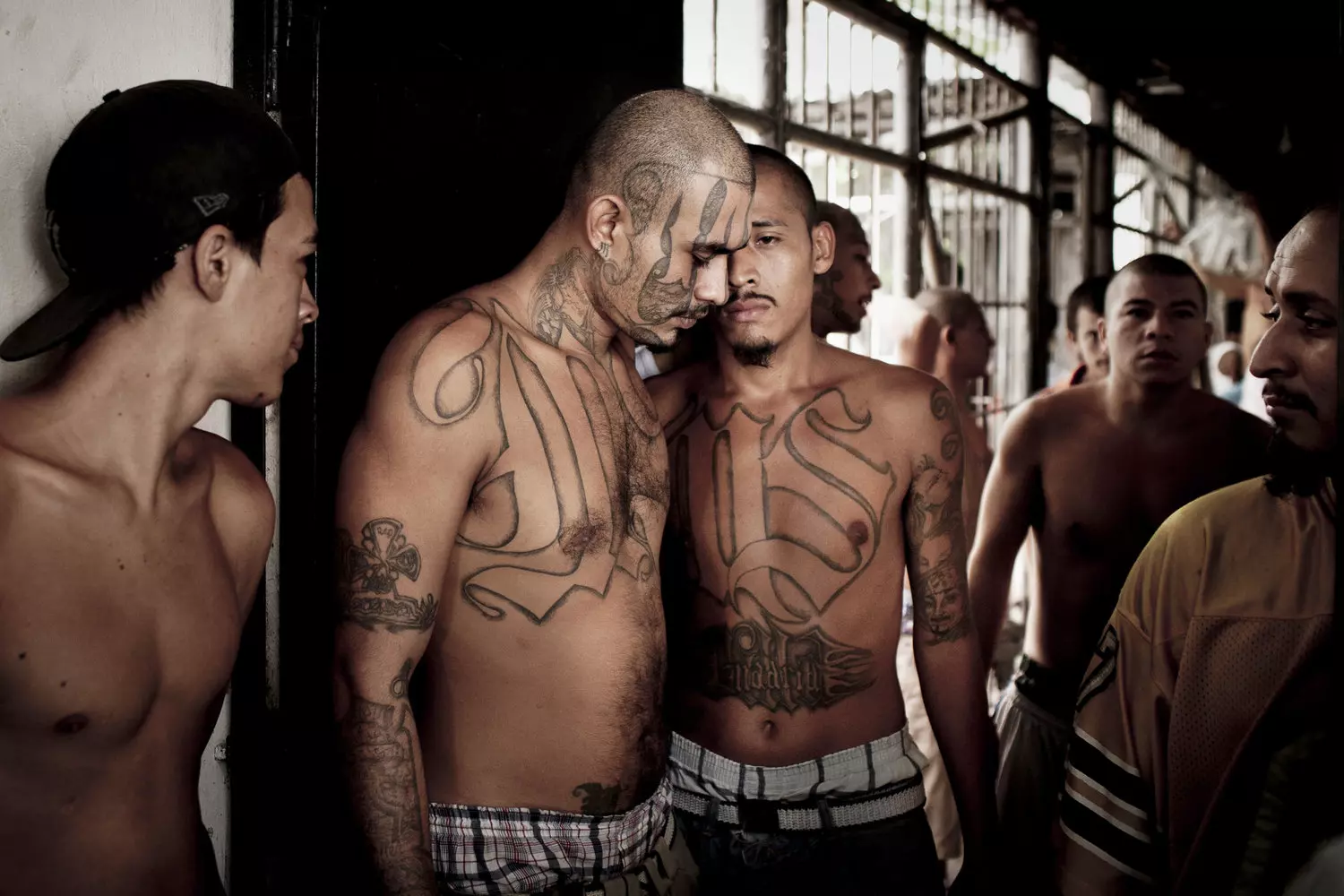
Latin Kings
Founded: 1950s, Chicago
Colors: Yellow and black
Founders: Puerto Rican immigrants
Symbols: Five-pointed crown, initials "LK" or "ALKN" (Almighty Latin King Nation)
Latin Kings is one of the oldest, most influential, and organized street gangs in the United States. Unlike many other groups, their structure resembles a quasi-religious cult, with a constitution, philosophy, hierarchy, and complex set of rules. The organization began as a self-defense community for Latinos in Chicago, but over the years it evolved into a powerful criminal network that spread across the country and beyond.
- 01. Ideology and Origins
The gang was founded by Latin American (mostly Puerto Rican) immigrants who faced racism, poverty, and police brutality. Its original goal was to protect the rights and interests of the Latino population. This idea remains at the core of the Latin Kings' ideology even after the group became entangled in criminal activity.
Within the organization, they promote unity, pride in ethnic heritage, discipline, and loyalty to the "nation." They call themselves not just a gang, but a "family" and a "movement for justice." They have what’s known as the "Holy Book" — a document containing the manifesto, code of conduct, philosophy, and punishments for violations. - 02. Hierarchy and Structure
The Latin Kings have one of the most clearly defined hierarchies among all street gangs:
- Inca (King)
Leader of a specific chapter (set) - Crown (Premier)
Advisor or deputy to the Inca - Soldier
Regular gang member - Probationary
New recruit under trial.
There are also "national" leaders who oversee the entire organization on a federal level, especially in prisons.
- 03. Rituals and Symbolism
The gang's symbol is the five-pointed crown — a sign of authority and royal dignity. It is often seen in graffiti, tattoos, and drawings. The colors are black (power) and gold (light, knowledge). The gang greeting is an open palm with five fingers (representing the five points of the crown).
Members of the Latin Kings are required to undergo initiation rituals, follow an internal code, and attend meetings known as "universals". Breaking the rules may lead to expulsion, physical punishment, or even execution. - 04. Activities and Crimes
Although the Latin Kings officially claim peaceful objectives, in reality, the gang is heavily involved in criminal activity: drug trafficking (heroin, crack, methamphetamine), racketeering and extortion, prostitution and human trafficking, murders, contract assaults, and control over prison blocks.
The gang operates both on the streets and behind bars, where the Latin Kings are often the most dominant force. They maintain a clear system of control even in prison. - 05. Latin Kings originated in Chicago
But by the 1990s had expanded across the United States: New York, New Jersey, Connecticut, Florida, and other states. Additionally, gang chapters exist in Latin American countries and even in Spain. According to law enforcement, the gang has tens of thousands of members. - 06. Cultural Influence
The Latin Kings have had a significant influence on Latino youth culture. Their ideology, symbolism, and style became part of street fashion. In hip-hop and Latin trap music, references to the Latin Kings can be found among artists connected to street life.
However, glorifying the gang in music and films is controversial: the reality of life within the Latin Kings is far from romantic — it's a life filled with violence, fear, and constant threat. - 07. Attempts at Legalization and Reform
In the early 2000s, some members of the Latin Kings tried to redirect the gang’s path — turning it into a legal movement for Latino rights. In New York and Chicago, they organized rallies, educational programs, and public events.
However, these efforts almost always failed — either due to police pressure or internal divisions. Many leaders who advocated for reform were arrested or eliminated by fellow members.
Interesting fact: In the 2000s, the leader of the Latin Kings in New York, Antonio Fernandez (King Tone), tried to transform the organization into a legal movement for minority rights and even met with human rights advocates. However, he was arrested for drug trafficking, which shattered the reform attempt.
Today, the Latin Kings remain one of the most recognizable and organized criminal groups in the United States. They are a paradoxical structure: on one hand — brotherhood and ideology, on the other — violence, drugs, and fear.
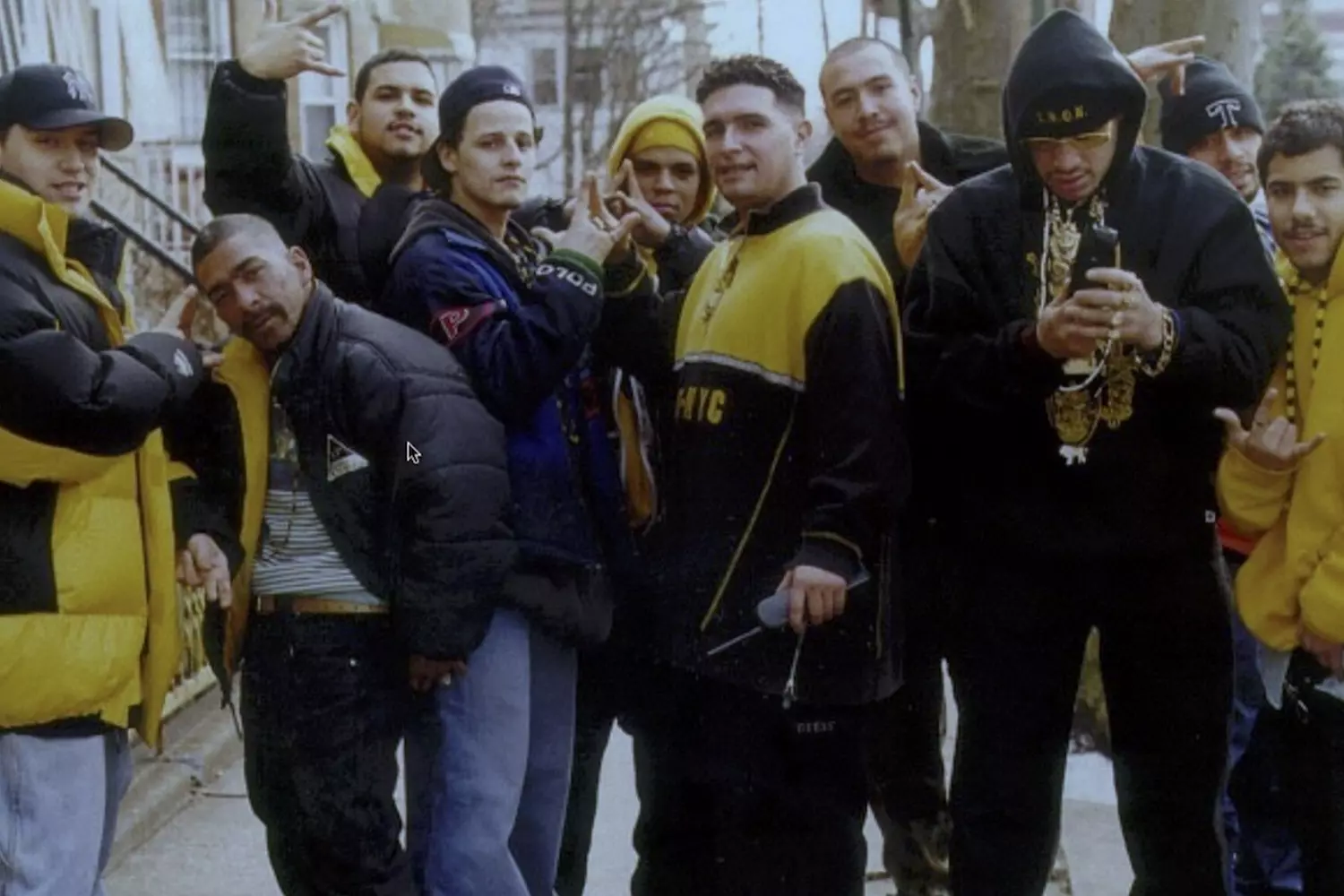
Gangster Disciples
Founded: 1960s, Chicago
Colors: Black and blue
Symbols: The number six (6), dice, three arrows, a modified Star of David
Gangster Disciples is one of the most influential and organized street gangs in Chicago, which throughout its history has managed to become something more than just a criminal group. Under the leadership of Larry Hoover, its founder, the gang initially positioned itself as a social movement with a political agenda and a drive for social justice. However, in practice, the Gangster Disciples quickly turned into a powerful criminal syndicate, controlling a significant portion of the city's drug trade, extortion, and violence.
- 01. Origins and political rhetoric
Larry Hoover, a former street fighter and local gang leader, envisioned in the late 1960s the creation of an organization that would not merely exist on the streets, but strive to change the lives of the African American community. Inspired by ideas of social justice and leadership, he laid the foundation for the Gangster Disciples’ philosophy, which included: fighting racism and discrimination, supporting Black youth, and creating structures for education and employment.
The gang's symbolism included signs reminiscent of traditional Masonic and other esoteric symbols, creating the image not just of a gang, but of a powerful brotherhood with deep roots and traditions. - 02. Hierarchy and structure
The Gangster Disciples are known for their strict and clearly defined hierarchy. Within the organization, roles and responsibilities are precisely distributed:
- Leaders (King, General)
The top of the chain of command, making key decisions - Captains
Responsible for specific territories or operations - Soldiers
Regular members who carry out orders - Recruiters
Those responsible for bringing in new members - Young Soldiers
Newcomers undergoing trials.
Strict discipline is mandatory. Violations of the rules are harshly punished — including expulsion or violence. Initiation rituals and an “oath of loyalty” to the gang play an important role.
- 03. Criminal activity
Despite their ideological rhetoric, the Gangster Disciples’ main source of income was crime. Control over drug trafficking — heroin, cocaine, crack — provided the gang with significant financial resources. In addition: racketeering and extortion, armed assaults and killings of rivals, illegal arms trade, and manipulation within prison structures.
The gangsters quickly understood the importance of controlling territory and building alliances with other criminal organizations, making them one of the most powerful syndicates in Chicago. - 04. Impact on society and culture
The Gangster Disciples became not just a street gang, but a kind of social phenomenon. In some neighborhoods of Chicago, they were seen not only as a threat but also as a force capable of maintaining order and protecting the local population. This dual perception — enemies to some and “guardians” to others — amplified their influence.
Moreover, the Gangster Disciples found their way into music and popular culture. Rappers from Chicago and other cities often mention the gang in their tracks, creating the image of “street kings” and defenders of their communities.
Interesting fact: Despite their criminal nature, the Gangster Disciples were known for their strict discipline and code of honor. For example, in the 1980s, the gang had an unwritten rule — not to attack women and children, which distinguished them from other groups that lacked such restrictions.
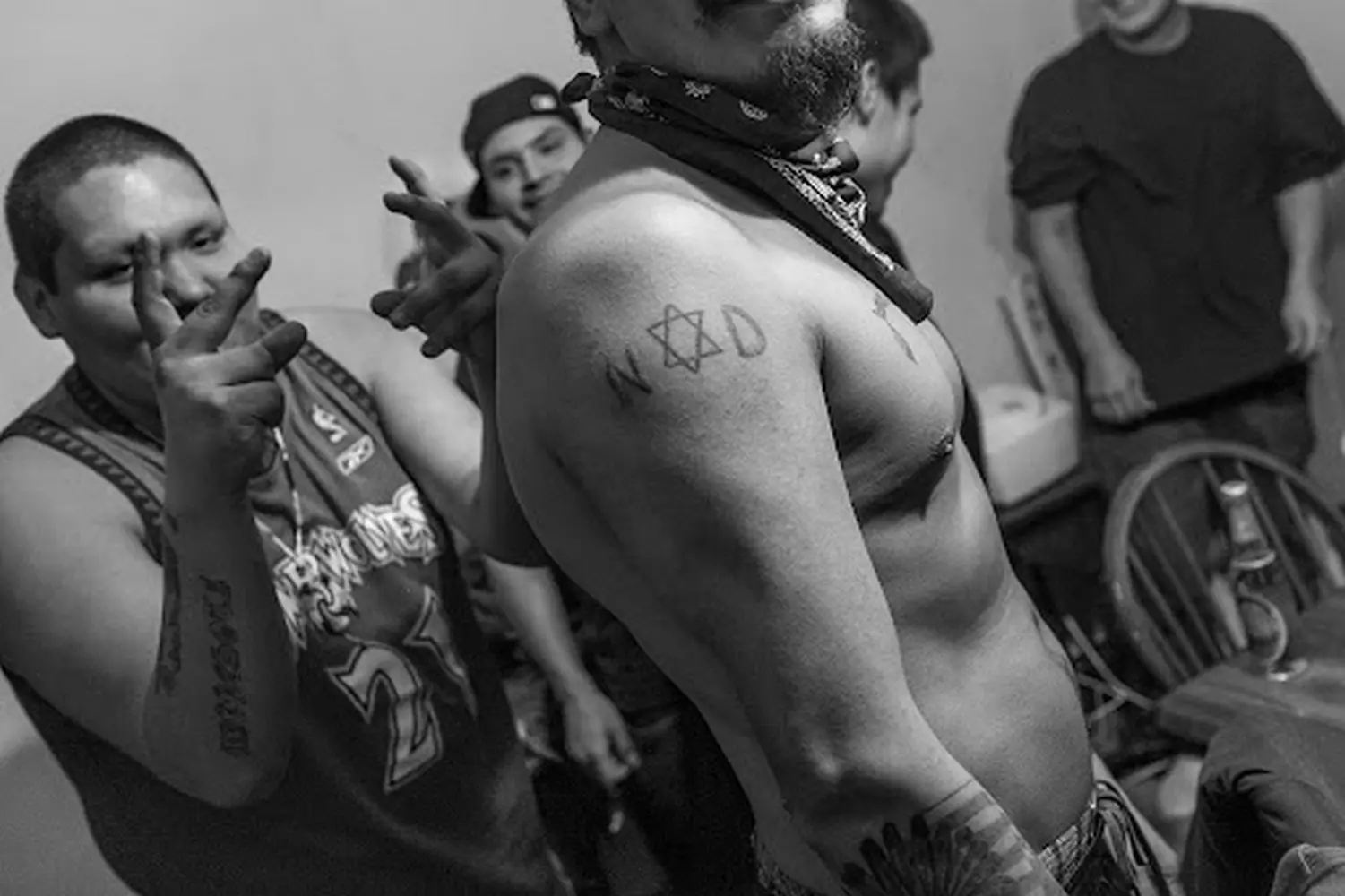
How Gangs Influence Society and Culture
Street gangs in the USA are not just criminal structures operating in the shadows of cities. Their influence goes much further, penetrating deep into mass culture, social norms, and even language. Paradoxically, these groups, born out of poverty and violence, have become sources of creativity and cultural trends while remaining a serious problem for society.
- 01. Cultural influence: from music to fashion
One of the main areas where the impact of gangs is most visible is music. Hip-hop and rap — musical genres that emerged directly from the ghettos, from the very neighborhoods where gangs thrived. Their lyrics reflect the harsh street reality, the struggle to survive, betrayal, and brotherhood.
- Rap legends like Tupac Shakur and The Notorious B.I.G. openly spoke about life in gangs and the influence of street groups on their destinies.
- Many modern performers, such as Snoop Dogg and Dr. Dre, had ties to gangs and brought elements of street culture into their art.
- Lyrics often include slang, symbolism, and even real-life stories that reflect gang life.
In fashion, the influence is just as evident. Red and blue bandanas, oversized T-shirts and jeans, chunky sneakers — these attributes have become essential parts of a style born in the urban streets. Today, such elements are often used by fashion brands and celebrities, not always understanding or acknowledging their original meaning.
Film and television also borrow heavily from gang imagery. Movies like “Heat,” “City of God”, and the TV series “Sons of Anarchy” portray gangsters as complex, multi-faceted characters — antiheroes living by their own rules. This image both frightens and fascinates audiences.
The linguistic aspect is equally interesting. Many Americanisms and slang expressions originated from street gang environments — for example, words like “homie,” “thug,” “crib” and many others. This language has become part of youth speech and even infiltrated mainstream culture.
- 02. Negative consequences of gang influence
However, the influence of gangs on society is far from unambiguous. The criminal activities of these groups lead to a number of serious problems:
- Rise in crime
Gang control over certain neighborhoods is often accompanied by violence, drug trafficking, and clashes, making life in these areas dangerous. - Fear among residents
Many people are afraid to go out after dark, fearing becoming victims of street conflicts or random violence. This breeds isolation and alienation within communities. - Influence on youth
One of the most troubling trends is the romanticization of gang life among teenagers. Imagery from music, films, and social media creates the illusion that being part of a gang is a path to respect and power. In reality, many of these young people end up in prison or become victims of violence.
- 03. Social dilemmas and challenges
Street gangs are a reflection of deep social problems: poverty, discrimination, and lack of opportunities. Their cultural impact is both a call to attention and a warning signal about how deeply these issues penetrate society.
In response, rehabilitation and prevention programs have emerged, aimed at reducing the appeal of gangs to young people. Community organizations strive to create alternatives, whether through sports, creativity, or education, that can help youth choose a different path.
Interesting fact: Did you know that the term “OG” (Original Gangster), which is now often used in youth slang and pop culture to mean “cool” or “respected,” originally came from the street gangs of Los Angeles? It referred to the original, older gang members who earned respect through experience and leadership.
Thus, street gangs in the USA are a multifaceted phenomenon. They shape certain cultural trends and language, but at the same time, they are a source of serious social challenges. Understanding this balance is key to building safer and more just communities.
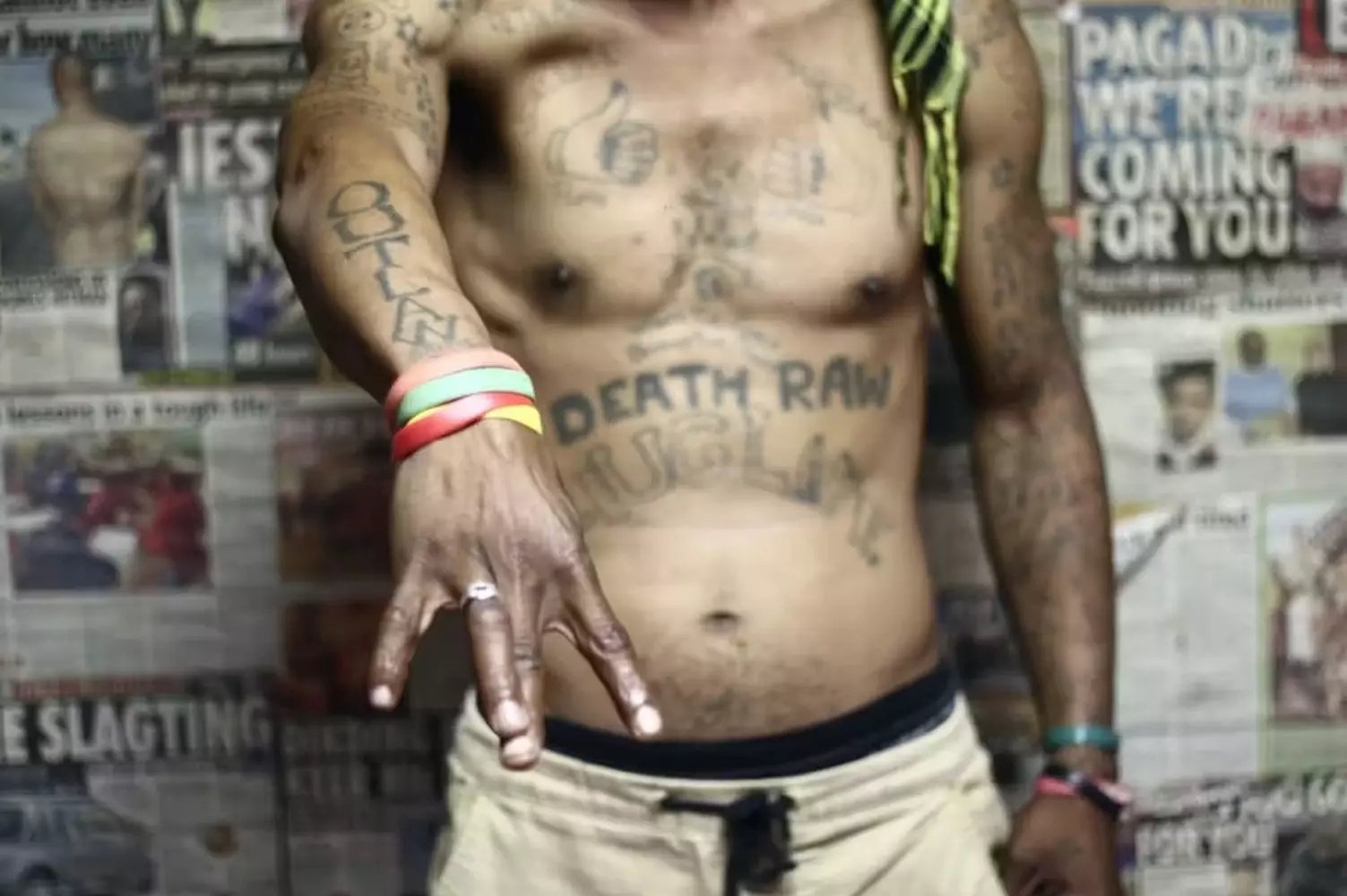
How the System Works to Combat Street Gangs
Fighting street gangs is a complex and multifaceted process that requires the involvement of numerous institutions and services. The problem is not limited to law enforcement — it is deeply rooted in the social, economic, and cultural aspects of society. Therefore, the approach to solving it must be comprehensive: from forceful methods to preventive and rehabilitative programs.
- 01. Law enforcement: battling on the frontlines
The primary force in the fight against street gangs is made up of law enforcement agencies. Key players include federal and local authorities.
- FBI and the Gang Task Force program
The Federal Bureau of Investigation has a special unit dedicated to identifying and neutralizing gangs, particularly those with interregional or international connections. The Gang Task Force combines the efforts of the FBI, local police, and other agencies to combat organized crime effectively. This program focuses on intelligence gathering, special operations, and prosecuting gang leaders. - Local police departments
They play a crucial role at the district and city level. Police conduct raids, patrol high-risk neighborhoods, carry out fieldwork, and engage with the community. Some cities have established special anti-gang units trained specifically to deal with these groups.
However, forceful tactics alone do not always produce long-term results. Cracking down on a gang may lead to a temporary drop in violence, but often exacerbates the conflict if not accompanied by social interventions.
- 02. Rehabilitation and social reintegration programs
Recognizing that the problem cannot be “eliminated” by force alone, many cities and states actively develop programs aimed at rehabilitating gang members and preventing the recruitment of new ones.
- Rehabilitation centers
These centers offer support to former gang members: psychological assistance, vocational training, help with reintegration into society, and family reunification. Such programs often collaborate with community organizations and church groups. - Educational initiatives and training
An essential element. In schools and special centers, teenagers are educated about the consequences of gang life, taught critical thinking, future planning, and peaceful conflict resolution.
These measures target not only former offenders but also at-risk youth.
- 03. School and youth projects in the ghettos
Many programs are focused on working directly in impoverished neighborhoods where gang influence is strongest.
- Sports sections and clubs
Provide an alternative to street life. Team sports teach discipline, mutual support, and offer a sense of belonging without violence. - Creative workshops, music and theater studios
Help teenagers express emotions and break free from the vicious cycle of the ghetto. - Mentorship programs
Former gang members or social workers act as mentors, sharing their experiences and helping young people choose a different path.
These projects have proven effective: they reduce recidivism and foster a sense of community beyond the criminal world.
Why does the problem persist?
Despite all efforts, street gangs still exist and sometimes even strengthen their positions. The main reason lies in the social and economic roots of the problem.
- Poverty and lack of opportunities
For many teenagers from disadvantaged families, gangs become the only accessible source of protection, income, and recognition. - Problems in education
Schools in poor neighborhoods often suffer from underfunding, poor infrastructure, and low teaching standards. This reduces young people’s chances of getting a decent profession. - Lack of family and community support
Many children grow up in troubled environments, exposed to violence and neglect, making the street gang an “alternative family.”
Combating street gangs is not just the job of police or special forces. It is a systemic challenge that requires comprehensive solutions — from improving socio-economic conditions and education to creating opportunities for self-realization and providing grassroots support.
Only the combined efforts of the government, society, and local communities can gradually reduce the influence of gangs and give younger generations a real chance at a future outside of crime.

Shadows of the Streets: Shocking Stories About U.S. Street Gangs You Didn’t Know
Street gangs in the U.S. are not just groups of hooligans, but complex criminal structures with their own laws, economies, and even diplomacy. They control entire neighborhoods, influence politics and culture, and their history is full of unexpected twists. Here are some little-known but striking stories that reveal the true face of the American street underground.
- 01. Gangs older than the U.S.
The first street gangs in America appeared back in the 18th century. For example, the "Five Points" in New York (known from the movie "Gangs of New York") were among the first organized gangs, made up of Irish and Italian immigrants. - 02. Gangs have their own "stock exchanges"
Some gangs (such as MS-13 and Latin Kings) run real businesses: drug trafficking, racketeering, arms smuggling. Their annual revenues can reach hundreds of millions of dollars. - 03. Gangs write their own "bibles"
Many gangs have their own codes — for example, the "Folk Nation Bible" for Folk Nation or the "Latin Kings Code". Breaking these laws is punishable by death. - 04. Gangs grow stronger in prison
Behind bars, gangs (like the Aryan Brotherhood or Black Guerrilla Family) turn into powerful organizations controlling contraband, drugs, and even contract killings. - 05. They have their own "social networks"
Gangs use YouTube, Instagram, and TikTok for recruiting, threats, and displays of power. Police actively monitor these accounts. - 06. Some gangs work with cartels
MS-13 and 18th Street cooperate with Mexican drug cartels, providing logistics for drug trafficking into the U.S. - 07. Former gang members help change laws
Ex-gang members sometimes become activists and help reduce violence. For example, the "Homeboy Industries" program in Los Angeles provides jobs for former gangsters. - 08. Gangs print counterfeit money
Some gangs (like the Gangster Disciples) mastered counterfeiting. In Chicago, police found fake $100 bills with gang symbols instead of watermarks. - 09. They have their own "Nobel Prizes"
In California prisons, members of the Mexican Mafia award a special "prize" for extreme brutality — the right to wear a red thread on the wrist. - 10. They fight... over sneakers
In Los Angeles, shootings have erupted over robberies of rare Nike Air Force sneakers. For some gangs, stealing the “right” shoes is a matter of status. - 11. Gangs recruit through video games
GTA Online and Call of Duty have become recruitment tools. Gang members search for teens in multiplayer modes, then offer them “jobs” in real life. - 12. "Plague" taxes
During the COVID-19 pandemic, the Black Disciples gang in Chicago imposed “quarantine fees” on drug dealers — allegedly to protect neighborhoods. - 13. Criminal feminism
Female gangs like Sisterhood (a branch of the Bloods) fight alongside men but demand equal shares in the drug business. - 14. Gangs sponsor schools
Paradoxically, in Texas, members of the Texas Syndicate paid for school lunches for children from poor families — to “boost their reputation” in the community. - 15. They get caught... through tattoos
Police use AI to analyze tattoo photos on social media. For instance, a spiderweb on the elbow is a sign of prison time.
The world of street gangs is not just about crime, but an alternative reality with its own rules, money, and power. They transform cities, culture, and even politics, staying in the shadows... until someone starts to notice.
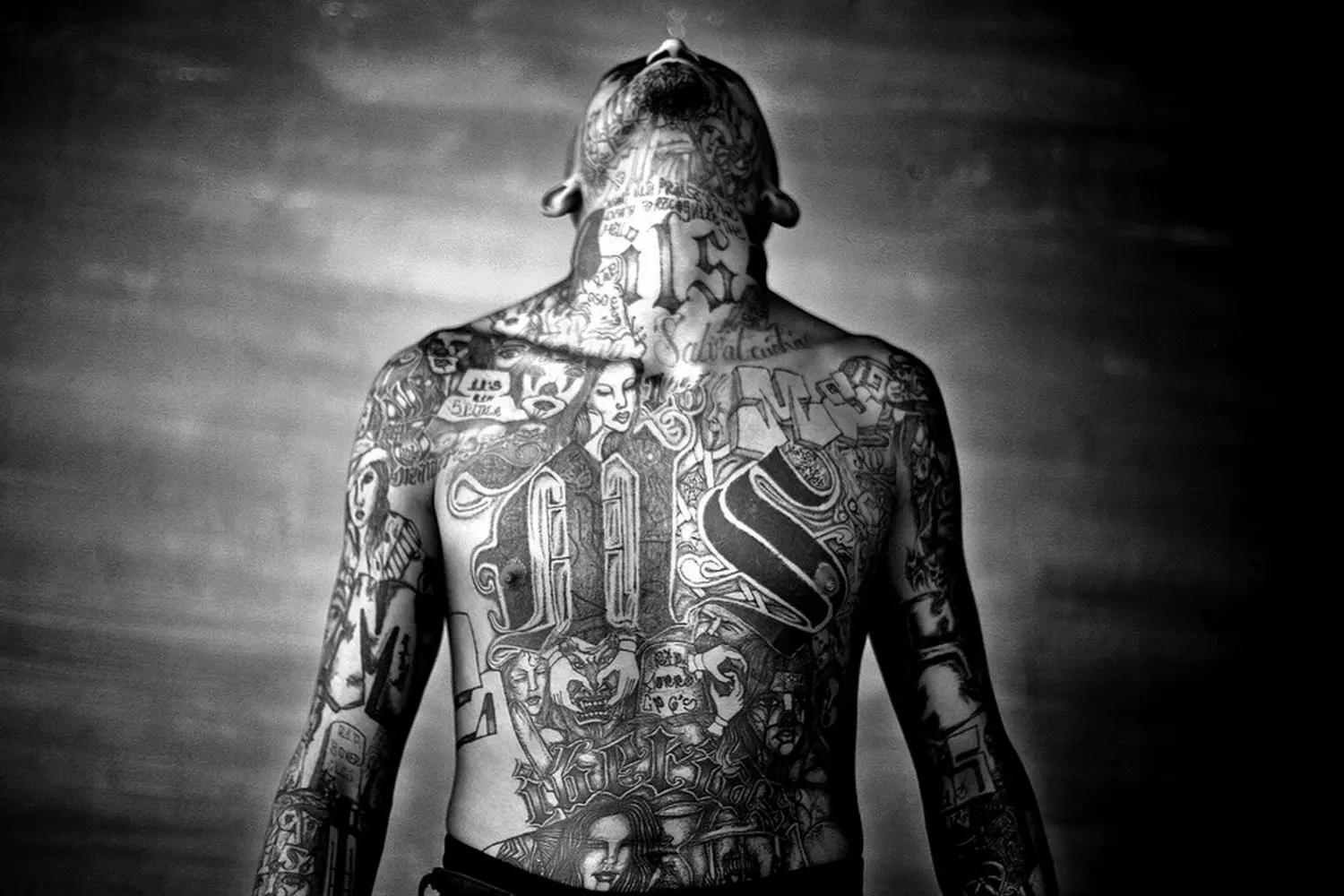
Dark Rituals and Digital Shadows: 10 Forbidden Facts About Gangs Hidden by the Authorities
Beneath the surface of street shootings and drug trafficking lies a true hell — a world where gangs perform occult rituals, build cryptocurrency empires, and even intervene in politics. Here are 10 of the most forbidden facts that official reports never mention.
- 01. Bloody Initiations into the "Black Hand"
Some Latin American gangs (for example, Mara Salvatrucha) practice ritual killings to initiate new members. The victim is forced to run while the initiates stab — whoever delivers the fatal blow passes the test. - 02. Gangster Bitcoin
Groups like the Hell's Angels and the Sinaloa Cartel are massively switching to cryptocurrencies. In Detroit, gang members were arrested for selling drugs via a Telegram bot, using darknet wallets with auto-lock features. - 03. Fake Elections
- In Chicago, members of the Gangster Disciples repeatedly bribed voters to get their people into the municipal government. One such councilman even headed the committee on combating... street crime.
- 04. "Dead Drops" — secret mail
The Latin Kings gangs use cemeteries as drug transfer points. Dried flowers on graves are markers for "dead drops." For years, the police could not understand why there was so much heroin in the area. - 05. Gangster OnlyFans
The female wing of Bloods (Sexy Red Gang) earns money on criminal content: live streams of robberies, "exclusive" fight videos. One such video brought them $250,000 in a week. - 06. Prison Magic
Members of the Aryan Brotherhood conduct neo-Nazi rituals in prisons involving blood and tattoos. Their "holy book" is a mix of "Mein Kampf" and prison laws. - 07. Gangster Uber
In Los Angeles, the Crips gangs created an illegal taxi service for drug transportation. Drivers use fake Lyft accounts, while customers order rides via encrypted emojis in WhatsApp. - 08. Ghost Gangs
The FBI still cannot prove the existence of "The Society" — an elite gang including police officers, lawyers, and even judges. They allegedly control half of the cocaine traffic in Miami. - 09. Killer Kids for Robux
Teen gangs like "52 Hoover" recruit schoolchildren via Roblox and Fortnite, offering virtual currency in exchange for real crimes. In 2023, a 14-year-old boy shot a man to get 10,000 Robux. - 10. Criminal AI
Gangs have started using neural networks to: generate fake documents, hack police databases, and create voice clones for extortion. In Houston, gangsters were arrested for using Deepfake technology to extort $1.5 million from a drug dealer by imitating his boss's voice.
This is no longer just street gangs — these are hybrid mafias using technology, corruption, and even magic. They are smarter, richer, and more dangerous than they seem.

Criminal Metaverse: How U.S. Gangs Build the Underground Empires of the Future
Modern street gangs are no longer just thugs with guns; they are high-tech syndicates deploying AI, trading on the darknet, and experimenting with genetic engineering. The FBI admits: these groups are years ahead of law enforcement. Here’s what’s happening on the darkest side of American streets.
- 01. Drugs 2.0: gangs printing narcotics on 3D printers
In Phoenix, police uncovered an underground lab where members of the Sinaloa Cartel were producing fentanyl using chemical 3D printers. Now they can alter formulas on the fly to bypass bans. - 02. Kamizake drones with methamphetamine
Gangs like MS-13 and Jalisco Cartel use modified drones to smuggle drugs across the border. The latest trend: drones armed with explosives attacking rival labs. - 03. GMO drugs: when gangs play God
In underground labs in Los Angeles, Latin Kings experiment with genetically modified psilocybin mushrooms that cause addiction from the first dose. - 04. Virtual gangs in the metaverse
Members of Crips and Bloods are already creating NFT clans in decentralized worlds: selling virtual land to launder money, and holding digital "showdowns" via VR chats. - 05. Smart homes = drug shops
Gangs rent homes with “smart lock” systems, where customers enter codes to collect goods, while AI-powered cameras filter out police officers. - 06. Trojan apps in Google Play
The FBI uncovered 17 fake apps (fitness trackers, games) that were actually interfaces for ordering hits from the Black Disciples gang. - 07. Blockchain shootouts
Rival gangs now hack each other’s crypto wallets instead of shooting. In 2023, Mara Salvatrucha stole $4 million from rivals exploiting a smart contract vulnerability. - 08. AI snipers with facial recognition
In Detroit, cases were recorded where automated rifles on rooftops fired exclusively at members of rival gangs. - 09. Gangs buying satellites
Through shell companies, the Mexican Mafia finances private satellite systems to monitor cocaine shipments. The next step — their own darknet internet. - 10. Neuro-drug couriers
Gangs like Jalisco New Generation experiment with Vagus Nerve Stimulation implants, implanted into drug couriers. Via an app, they can remotely trigger vomiting fits during arrests (to destroy evidence) or induce artificial heart attacks in traitors. - 11. DNA extortion
The "23rd Street Killers" gang in Oakland collects victims' biological material (hair, cigarette butts). For $50,000, they offer not to submit the DNA to the police CODIS database. - 12. Criminal quantum computer
Rumors circulate in underground chats that the Sinaloa Cartel rents a 20-qubit quantum computer through Chinese intermediaries. Their goal — to hack the Federal Reserve’s banking systems. - 13. Smart bullets with Wi-Fi
A shipment of 9mm rounds with microchips was seized in Chicago. When activated, the bullet changes trajectory (via drone signal), explodes inside the body, and self-destructs its metallography. - 14. Genetically modified killers
A Houston lab linked to the Aryan Brotherhood develops a virus targeting only people with the R1b haplogroup (Europeans). DNA weapon samples were found in vials marked with the "14/88" logo. - 15. AI prophet of the gangster apocalypse
A darknet algorithm called "Nostradamus-3000" has appeared, which predicts police raids with 92% accuracy, generates dates for future gang wars, and calculates optimal corruption schemes.
When the FBI arrested a 17-year-old hacker from Crips, they found a flash drive labeled: "You’re playing Checkers. We’re already in 5D chess."
This is no longer mere banditry — it’s next-generation cyberwarfare. The police are losing because the laws are hopelessly outdated.
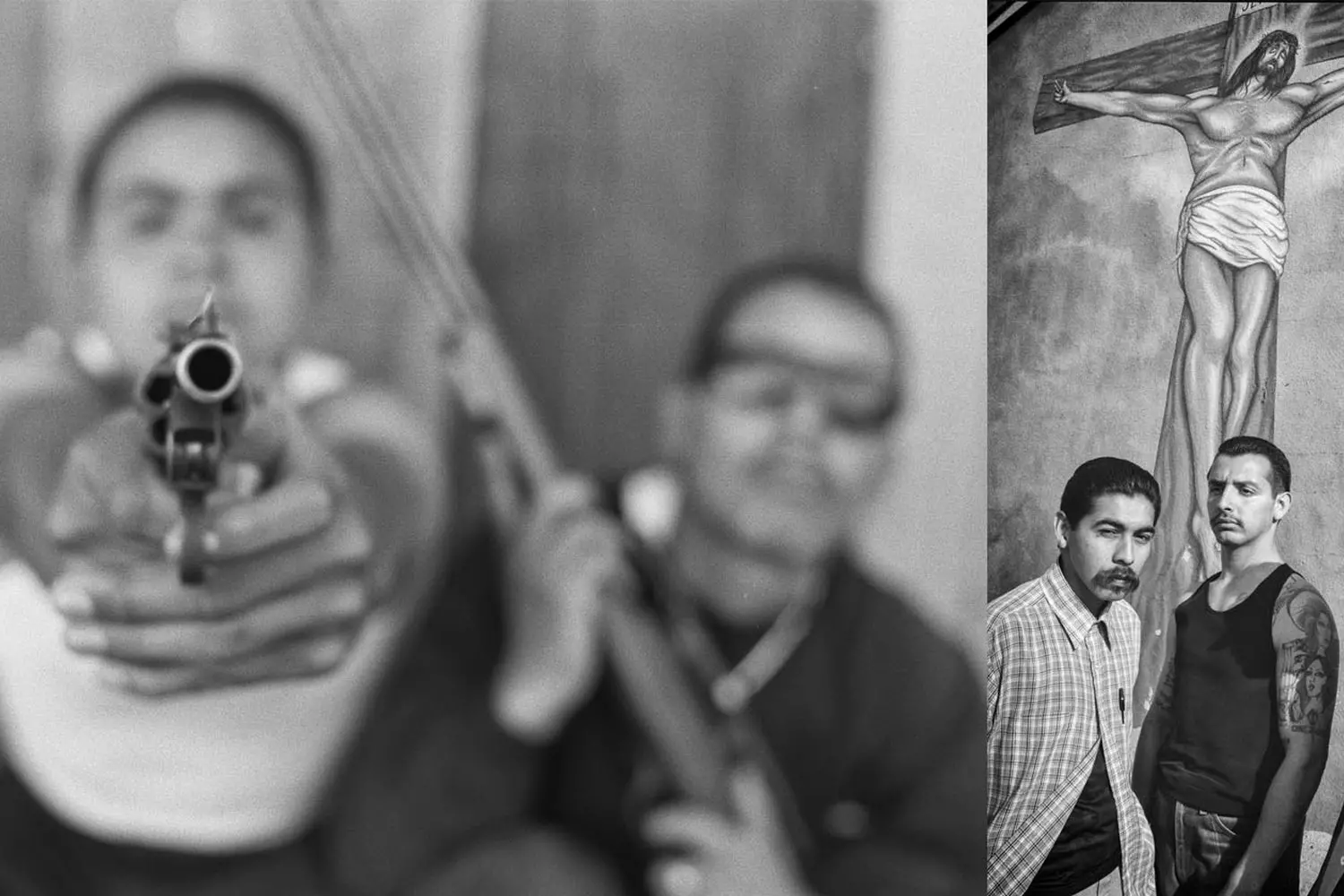
Discover America on a deeper level with American Butler
Street gangs in the USA are not just about crime and violence. They reflect a complex, multilayered social reality. It is a tragedy of generations seeking power, protection, and meaning — and finding it in the most dangerous places. Understanding this world is important not to accept it, but to prevent it from growing.
If you want to see the real America — unvarnished but safe — book a guided custom tour with American Butler. We will show you Los Angeles, New York, or Chicago from the side you won’t find in tourist brochures. With insight into the culture, history, and the real streets.























